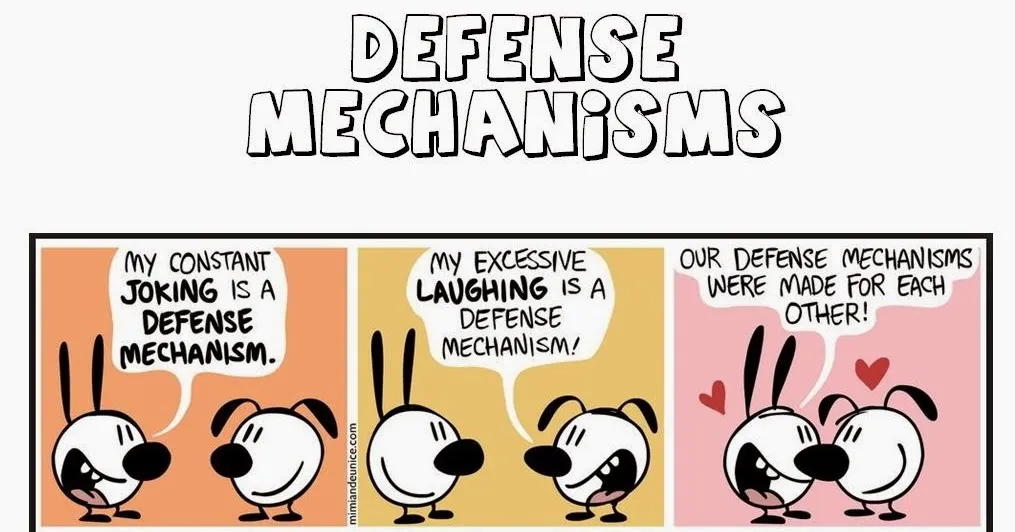The Connection Of Defense Mechanisms to Personality Disorder

Image Source
Since ego is continually endeavoring to fulfill the imprudent demands of the id while regarding the constraints of reality and the moral constraints of the superego, awareness is always helpless against sentiments of anxiety. From one perspective, id instincts resemble savages at the entry, always undermining to get through ego controls and immerse behavior with raw animal forces. Awareness of this plausibility produces what Freud alluded to as neurotic anxiety.
Then again, the superego demands perfection, undermining to surge awareness with guilt at whatever point the satisfaction of id demands isn't adequately camouflaged, which Freud alluded to as moral anxiety. One is a sinner and the other is a saint. At last, dangers from the external world can deliver reality anxiety. On the off chance that you hear on the radio that the stock market has quite recently smashed, your worry about your investments is realistic. Whatever the source, anxiety is a flag to ego that some form of remedial action must be taken to strengthen its controls.
How does the ego shield itself from being overpowered? In time, Freud and his followers found the defense mechanisms. Through his investigations of hysteria, Freud had just been directed to the existence of the unconscious and the disclosure that guilt can be transformed into a symptom. He found, for instance, that uncontrollable aggressive urges may prompt a hysterical paralysis in the hand that may be utilized to strike somebody.

Image Source
In spite of the fact that the objective is always a similar which is to ensure the holiness of awareness by decreasing the level of anxiety or risk, distinctive defense mechanisms work in fundamentally extraordinary ways. Some appear to be simple. Denial, for instance, is a direct push to overlook repulsive realities. Repression is comparative however is planned to keep offensive thoughts from regularly achieving conscious awareness. In the event that repression is fruitful, there is nothing to deny.
Histrionics, for instance, utilize repression to keep their world sweet and simple, they essentially can't be wasted time with the profound existential riddles of human existence, nor do they wish to stand up to their own hypersexual control of others. As opposed to denial and repression, other defense mechanisms appear to be more perplexing or convoluted. Rationalization, for instance, is regularly used to legitimize a specific action sometime later.
As a result, ego takes a gander at the two its own particular behavior and the situation as it may be seen by others and asks, "In what capacity would what be able to I've done be made to appear to be sensible?" This defense is a most loved of narcissists, whose self-centeredness regularly drives them to act without thoroughly considering ahead of time the outcomes for others or how their own particular actions may be viewed. Other defense mechanisms appear to be convoluted. In projection, for instance, inadmissible thought processes are exchanged from the self and credited to others.
Paranoids utilize projection to rid themselves of guilt about their own aggressive driving forces, by ascribing such dangers to others, the paranoid turns into the abused, imperiled, thoughtful victim.

Image Source
Basic Defense Mechanisms
Acting Out
Denial
Devaluation
Displacement
Dissociation
Fantasy
Idealization
Isolation of Affect
Omnipotence
Projection
Projective Identification
Rationalization
Reaction Formation
Repression
Splitting
Sublimation
Undoing
Numerous psychodynamic ideas have shriveled over time, the defense mechanisms constitute a persevering legacy that keeps on informing contemporary hypothesis of the personality disorders. Early investigators were occupied with what psychodynamic language calls the vicissitudes of instincts, that is, their transformation by the ego and inevitable articulation in behavior, regularly as symptoms.
Thinkers wound up noticeably intrigued more in the different ways the ego guards itself from anxiety, and additionally its own particular inborn limits. While Freud held that the ego created from out of the id and, accordingly, was reliant on its supply of libidinal energy, these ego psychologists attested that the investigation of the id was just a first stage in the investigation of the total personality. They trusted the ego had its own autonomous limits, totally free of the id.

Image Source
Naturally, the ego's strategy for protecting itself against different agencies inside the personality was a focal concentration of the thought. Defense mechanisms are viewed as so critical that they constitute an Axis proposed for additional examination, to be considered for incorporation in DSM-V.
Each individual uses an assortment of defenses, every personality disorder appears to lean toward a specific subset of defenses over the others. These can be utilized to develop a defensive profile that delineates how that personality disorder shields itself from internal and external wellsprings of stress, anxiety, and test. The compulsive personality, for instance, must adapt to serious aggressive urges made by parents who were exorbitantly controlling and demanding of perfection.
Utilizing reaction formation, the compulsive transforms these urges into their opposite. By overconforming to internalized superego structures, compulsives appear to be exceedingly controlled and self-contained, however they are regularly overflowing with rebellion underneath. Their need to smother upwelling aggressive forces is profound to the point that they regularly make unnecessary utilization of another mechanism, isolation of affect.
By stripping the emotions from ideas, the compulsive makes a mental working condition sanitized against the scattering impact of awkward affects, while an awareness of the scholarly parts of the ideas remains.

References:
Personality Disorders in Modern Life
By: Theordore Millon